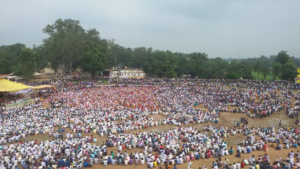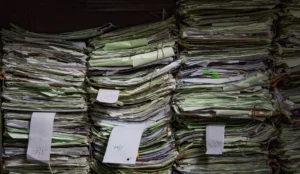

Building a Single Source for Laws in India – Approach and Ideas
A recent policy decision to allow the private sector into mapping is rightly hailed as historic. It reverses a policy position that was in practice for at least 250 years that allowed only the Survey of India to publish detailed maps of the territory of India. This prevented availability of high precision maps of large parts of India that have many public uses, including building of digital solutions. Under the new policy, private sector can develop their own maps – and build and enable building, solutions on top of this layer. And the range of solutions possible that could directly impact lives and livelihoods of many in India are only limited by our imagination.
DAKSH’s recent white paper ’Single Source for Laws’ calls for adopting a contrasting policy in another important sector: laws of the land. The paper argues that there must be a single, authentic, comprehensive, and updated source for the laws of the land. This must be provided by the state. Currently the laws are made available in various state gazettes and government websites.
If ignorance of law is not an excuse for the citizen for not having complied with it, the state must try harder in dispelling that ignorance. The India Code Portal initiative was meant to serve some of these needs, but has fallen short of expectation. The Delhi High Court in the case of Union of India v. Vansh Sharad Gupta, passed a series of orders to improve the India Code Portal. There have been some improvements, but much still needs to be done, especially in terms of providing an authenticated and reliable source of laws. The Bombay High Court in Mumbai Grahak Panchayat v. State of Maharashtra and Others also highlighted the need for adequate access to laws in Maharashtra. The administrative and procedural challenges towards building the single source for laws should not be underestimated. This cannot be remedied by technological solutions alone. It requires close inter-departmental co-ordination and capacity at both the Union and State levels.
While administrative overhaul is critical in implementing the single source for laws, there is scope to innovate with technology. Building a single source can draw much from the principles of legal design. The concept of legal design focuses on how citizens understand legal processes, laws, and consume legal information. It is a recent development that focuses on the last-mile connectivity in making citizens understand and access legal information. The emergence of legal design as a concept is linked to the growing reliance of governments and institutions on the digital medium and hence the need to design processes to be citizen centric.
While there is emphasis on ensuring all legislations are available, the focus should be on how this information is designed for consumption. It will not benefit citizens if the government merely updates their respective websites with legislations. Thus, the legal design that accommodates accessibility to laws in the government portal is important.
The time is now ripe for India to focus on legal design. One way to focus on legal design is to ensure that legal information is not merely available, but accessible. The accessibility should revolve around the various categories of citizens who are accessing these websites. Some of the legal design components that need immediate attention in India are: (a) categorising laws, rules, bye laws, circulars and notifications in a streamlined and clear manner; (b) making available Union laws in all Indian languages and state level laws in languages relevant to the states; and (c) access for the differently-abled. These measures can be improved using various technology tools to ensure that Indian portals providing legal information are at the forefront of the legal design revolution. Providing legal information in this systematic manner, and in machine- readable formats at a later point, will unlock value for the legal technology industry.
India is on the threshold of venturing into the legal design and accessibility intersection. We have a law that instructs government to ensure that they provide for inclusive access to justice (The Rights of Persons with Disabilities Act, 2016). The Act also talks about how all public documents are to be accessible for all and categorically provides for the list of duties that the governments ought to perform in terms of adhering to accessibility protocol for the differently-abled. We need to act on legislations such as these, while expanding our commitment in ensuring that legal information when disseminated is inclusive to all.
There is another compelling reason for building the single source: the process of mapping the landscape of the laws of the land will lead to discovery of conflicting laws, redundant provisions, and overlapping of jurisdictions of regulatory authorities; all vital information required for sustainable systemic legal reform. The single source should be a mechanism for providing digital public goods that are now indispensable in our day-to-day life. Easily available and understandable map of this landscape will enable digital solutions to be built to improve access and comprehension that will consequently have a positive impact on rule of law.
Please find the paper here : https://www.dakshindia.org/wp-content/uploads/2021/03/FINAL-Daksh-Paper-March-3-.pdf
The views expressed in this article are solely those of the authors’ and they do not represent the views of DAKSH.

Surya Prakash

Sandhya PR
RECENT ARTICLES


POLITICAL MANIFESTOS AND JUDICIAL REFORMS

Challenges in NCLT Filing Procedures: Advocates’ Perspectives

Beyond Revenue – Reimagining Court Fee As A Policy Tool For Judicial Administration

-
Rule of Law ProjectRule of Law Project
-
Access to Justice SurveyAccess to Justice Survey
-
BlogBlog
-
Contact UsContact Us
-
Statistics and ReportsStatistics and Reports
© 2021 DAKSH India. All rights reserved
Powered by Oy Media Solutions
Designed by GGWP Design